Background and context
Markets are the instruments supporting power system operations and developments by distributing electricity-related costs and benefits among players. Market rules may need to evolve in order to accommodate technological innovation and energy delivery solutions, while steering the energy transition to the citizens’ benefit. This is why we inform legislative and regulatory actions by studying options and evolutions of the wholesale energy market schemes.
Our role
We conduct several research activities, in support of the net-zero and Green Deal initiatives, including the following:
- Evaluation and monitoring of the generation adequacy and capacity mechanisms in the transitioning electricity systems and markets.
- Adequacy monitoring and anomalies detection in the wholesale electricity market (in the context of the Regulation on wholesale energy market integrity and transparency).
- Identification of the market and regulatory factors influencing smart grid investment in Europe.
- Analysis of regulatory determinants of transmission system unbundling choices.
- Comparative assessment of the nodal and zonal market schemes for the future electricity systems and markets.
- Discussion of the perspective features, boundaries and synergies of renewed electricity wholesale and retail markets fit for competitive low-carbon solutions.
Main publications
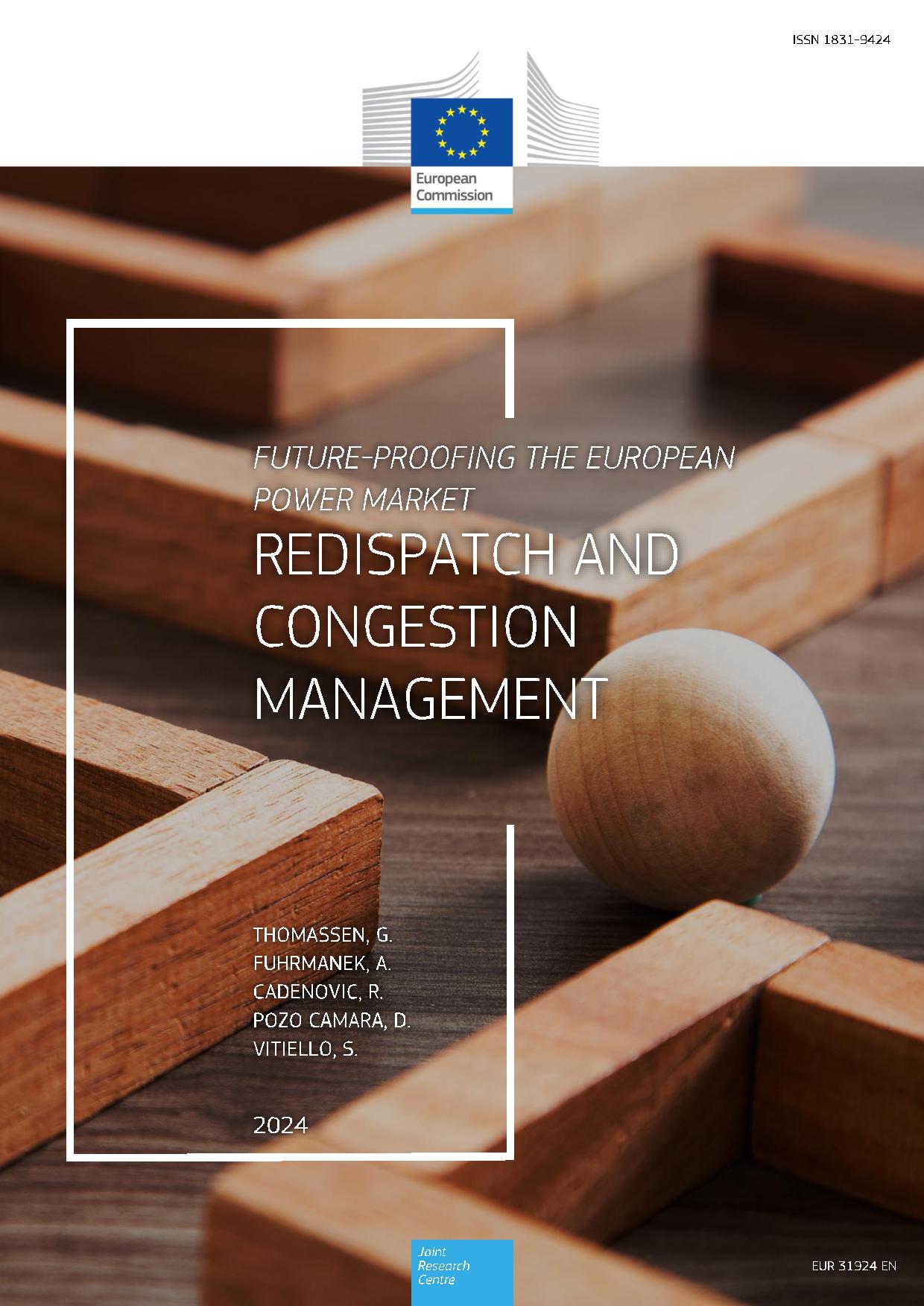
2024 - Redispatch and Congestion Management
In early 2024, the European Commission proposed a 90% emissions reduction target for the year 2040 in reference to the year 1990. Achieving this target largely relies on the deployment of distributed renewable generation. Currently the deployment of renewable capacity is mostly focusing on resource-rich areas with the highest capacity factors, not taking into account the grid topology. This can lead to a mismatch in the system, as those areas where renewable generation is focused do not necessarily align with where demand is located. The need to transmit the generated electricity inside a given zone could therefore regularly exceed the available grid capacity.
Our results suggest that this uncoordinated deployment will massively increase the need for redispatch – adjusting generator schedules after the market has cleared to achieve a physically feasible dispatch – as grids will be more and more constrained and incapable to fully transmit all available renewable electricity. In this way, up to 310 TWh of renewable generation could be curtailed due to limitations in the grid in 2040 in a business-as-usual grid expansion scenario, The need for redispatch could be further worsened by an inefficient operation and siting of electrolysers.
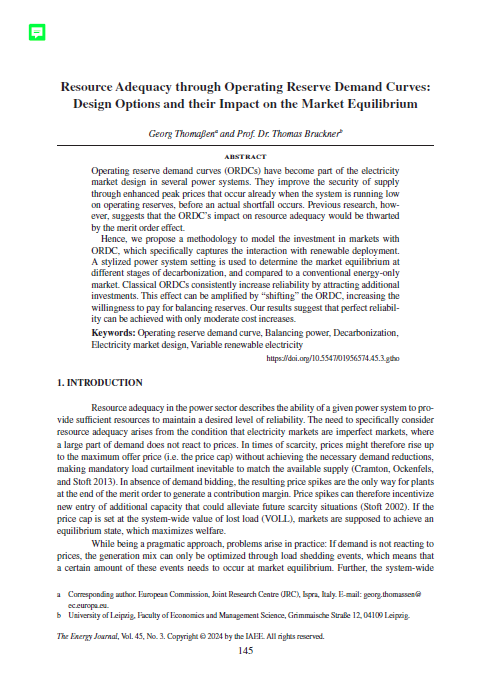
2024 - Resource Adequacy through Operating Reserve Demand Curves: Design Options and their Impact on the Market Equilibrium
Operating reserve demand curves (ORDCs) have become part of the electricity market design in several power systems. They improve the security of supply through enhanced peak prices that occur already when the system is running low on operating reserves, before an actual shortfall occurs. Previous research, however, suggests that the ORDC's impact on resource adequacy would be thwarted by the merit order effect.Hence, we propose a methodology to model the investment in markets with ORDC, which specifically captures the interaction with renewable deployment. A stylized power system setting is used to determine the market equilibrium at different stages of decarbonization, and compared to a conventional energy-only market. Classical ORDCs consistently increase reliability by attracting additional investments. This effect can be amplified by "shifting" the ORDC, increasing the willingness to pay for balancing reserves. Our results suggest that perfect reliability can be achieved with only moderate cost increases.
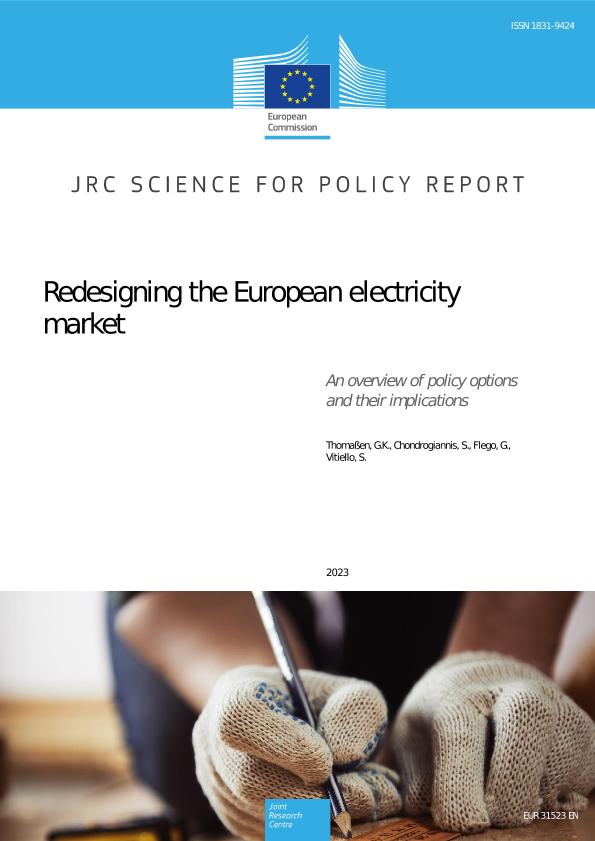
2023 - Redesigning the European electricity market
Russia’s invasion of Ukraine has sent gas prices to unprecedented highs. These price spikes spilled over to the electricity sector due to the marginal pricing mechanism – which mandates that the highest cleared bid sets the price in each market session.
The reform proposals that are discussed range from the expansion of market-based instruments to a complete abolishment of marginal pricing, replacing it with pricing based on average production costs. We take up the ongoing discussion to explore possible market architectures.
Therefore, we outline the main market design elements:
- Reduce windfall profits in crisis situations through the expansion of two-sided CfDs for producers of low-carbon electricity
- Redesigning auctions to drive the transformation towards carbon neutrality: a stronger reliance on auctions requires a better process to select projects.
We conclude that a reform is more promising than setting up a completely new market architecture, as there are already in the current system instruments to achieve price resilience and a fast response in energy crises.
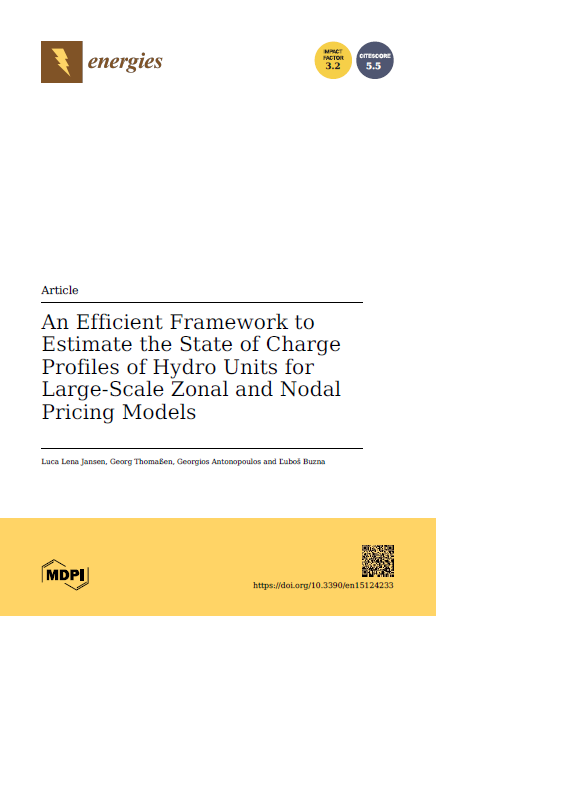
2022 - An Efficient Framework to Estimate the State of Charge Profiles of Hydro Units for Large-Scale Zonal and Nodal Pricing Models
The power system is undergoing significant changes so as to accommodate an increasing amount of renewably generated electricity. In order to facilitate these changes, a shift from the currently employed zonal pricing to nodal pricing is a topic that is receiving increasing interest. To explore alternative pricing mechanisms for the European electricity market, one needs to solve large-scale nodal optimization problems. These are computationally intensive to solve, and a parallelization or sequencing of the models can become necessary. The seasonality of hydro inflows and the issue of myopic foresight that does not display the value in storing water today and utilizing it in the future is a known problem in power system modeling. This work proposes a heuristic step-wise methodology to obtain state of charge profiles for hydro storage units for large-scale nodal and zonal models. Profiles obtained from solving an aggregated model serve as guidance for a nodal model with high spatial and temporal resolution that is solved in sequences. The sequenced problem is guided through soft constraints that are enforced with different sets of penalty factors. The proposed methodology allows for adjustments to congestions on short timescales and proves to perform well in comparison to other approaches to this issue suggested in the literature. Following the input profile closely on a long timescale renders good results for the nodal model.
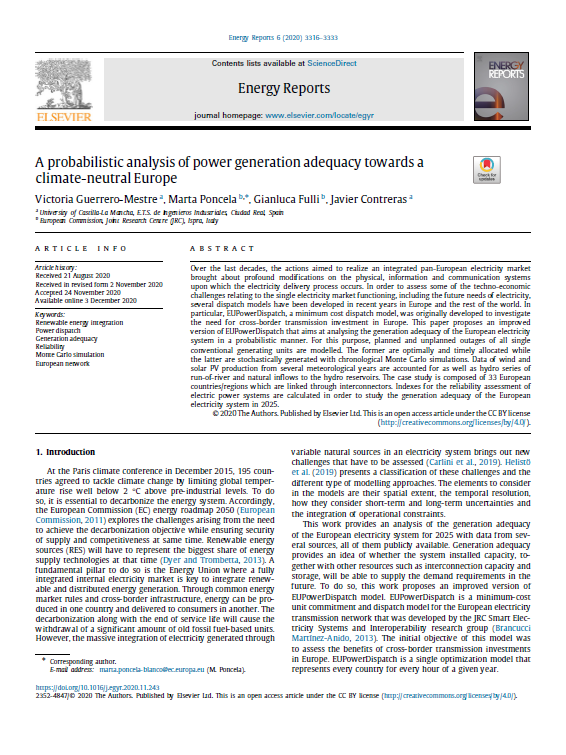
2020 - A probabilistic analysis of power generation adequacy towards a climate-neutral Europe
This paper proposes an improved version of EUPowerDispatch - a minimum cost dispatch model, was originally developed to investigate the need for cross-border transmission investment in Europe - that aims at analysing the generation adequacy of the European electricity system in a probabilistic manner. Over the last decades, the actions aimed to realize an integrated pan-European electricity market brought about profound modifications on the physical, information and communication systems upon which the electricity delivery process occurs. In order to assess some of the techno-economic challenges relating to the single electricity market functioning, including the future needs of electricity, several dispatch models have been developed in recent years in Europe and the rest of the world. The case study is composed of 33 European countries/regions which are linked through interconnectors. Indexes for the reliability assessment of electric power systems are calculated in order to study the generation adequacy of the European electricity system in 2025.
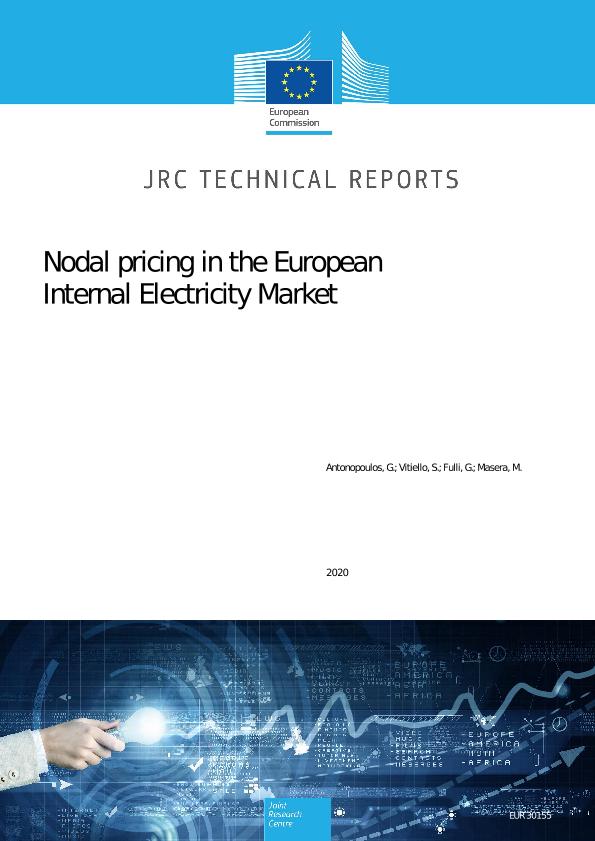
2020 - Nodal Pricing in the European Internal Electricity Market
This report summarises the findings of a project, awarded to Tractebel-Engie, to analyse the possibility and the effects of implementing nodal pricing in the European Internal electricity market based on the current and proposed legal framework.
In the past there have been studies and discussions regarding the use of nodal pricing in Europe. Indeed, the move to a nodal pricing scheme was considered as one of four possibilities for improving local price signals in the EC Impact Assessment of the Clean Energy package.
The report presents the origins and organisation of nodal pricing and the documented costs and benefits and describes the implementation challenges of applying nodal pricing in the EU.

2020 - The impacts of an integrated European adjustment market for electricity under high share of renewables
This paper intends to provide a precise insight into the potential impacts of EU policies regarding integrating electricity markets on market efficiency and on different market players with the aim of supporting policy makers to increase the penetration of renewables in a cost efficient manner. In this paper, we investigate and compare the current option of regional intraday electricity market with the option of an integrated Europe-wide one, with reference to the three European test cases with high renewable penetration: the Iberian electricity market including Spain and Portugal, the Italian electricity market including Italy and Slovenia, and the electricity market of Germany. We consider two 2030 scenarios: (i) the regional/local intraday electricity market, and (ii) the integration of the current regional intraday market of the test cases into a single intraday market in Europe. The two scenarios are modelled through stochastic Monte Carlo simulation, considering uncertainty on electricity demand, wind and solar power. The performance of the intraday market under the two options are compared in terms of generation cost, electricity prices, producer’ surplus, and load expenditure inside the European test cases. The simulation results lead to the conclusion that integrating to a Europe-wide intraday electricity market is not advantageous for power producers inside the European countries with high share of variable renewable generation, in terms of annual generation surplus. However, from the customers’ point of view, intraday market integration is beneficial, leading to lower cost to loads. Furthermore, it is shown that the flexibility provided by the installed capacity of hydro pumped-storage generators within Europe, by 2030, eliminates the planned curtailment of renewable energy sources in day-ahead and intraday markets and confines the impact of market integration on the market performance indicators.
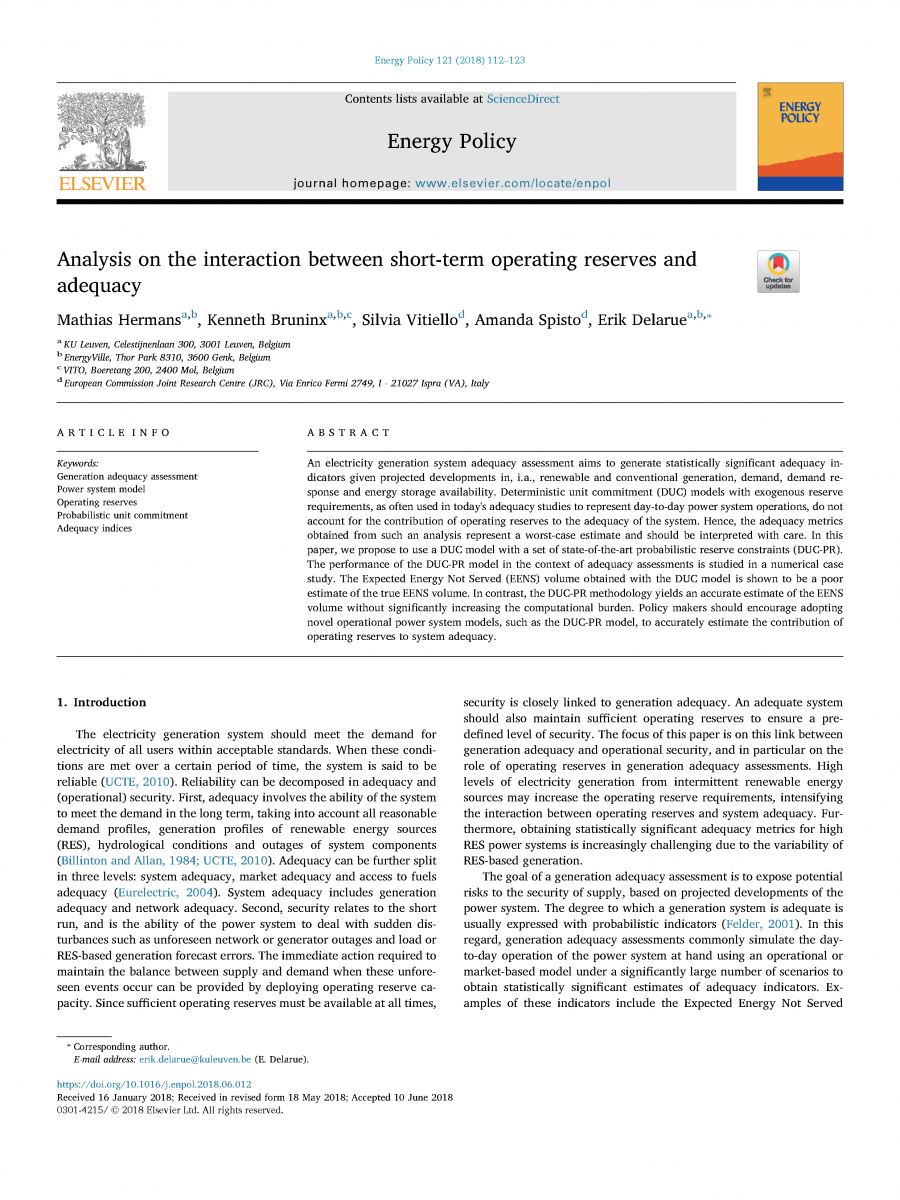
2018 - Analysis on the interaction between short-term operating reserves and adequacy
This paper proposes a Deterministic Unit Commitment (DUC) model with a set of state-of-the-art probabilistic reserve constraints (DUC-PR). An electricity generation system adequacy assessment aims to generate statistically significant adequacy indicators given projected developments in, i.a., renewable and conventional generation, demand, demand response and energy storage availability. DUC models with exogenous reserve requirements, as often used in today's adequacy studies to represent day-to-day power system operations, do not account for the contribution of operating reserves to the adequacy of the system. Hence, the adequacy metrics obtained from such an analysis represent a worst-case estimate and should be interpreted with care. The performance of the DUC-PR model in the context of adequacy assessments is studied in a numerical case study. The Expected Energy Not Served (EENS) volume obtained with the DUC model is shown to be a poor estimate of the true EENS volume. In contrast, the DUC-PR methodology yields an accurate estimate of the EENS volume without significantly increasing the computational burden. Policy makers should encourage adopting novel operational power system models, such as the DUC-PR model, to accurately estimate the contribution of operating reserves to system adequacy.
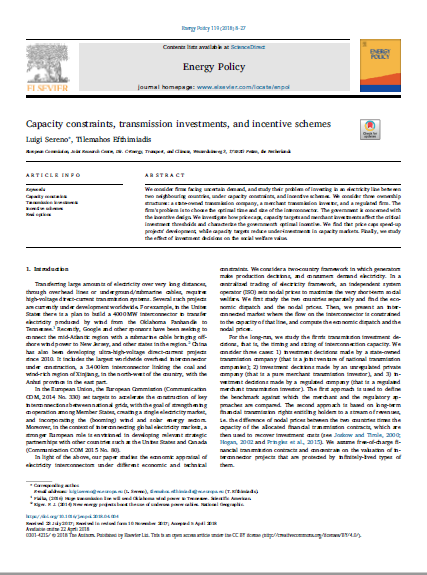
2018 - Capacity constraints, transmission investments, and incentive schemes
This paper investigates how price caps, capacity targets and merchant investments affect the critical investment thresholds and characterize the government's optimal incentive. We consider firms facing uncertain demand, and study their problem of investing in an electricity line between two neighbouring countries, under capacity constraints, and incentive schemes.
We consider three ownership structures: a state-owned transmission company, a merchant transmission investor, and a regulated firm. The firm's problem is to choose the optimal time and size of the interconnector. The government is concerned with the incentive design.
We find that price caps speed-up projects' development, while capacity targets reduce under-investments in capacity markets. Finally, we study the effect of investment decisions on the social welfare value.
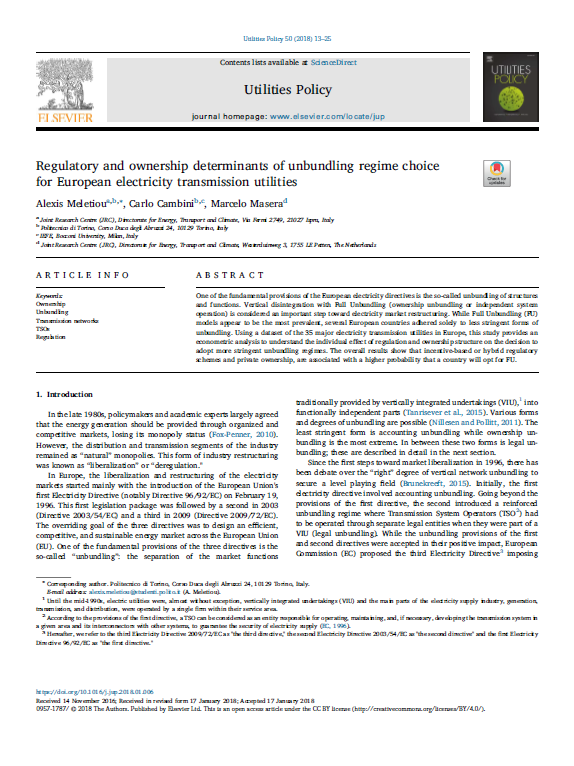
2018 - Regulatory and ownership determinants of unbundling regime for European transmission utilities
This paper provides an econometric analysis to understand the individual effect of regulation and ownership structure on the decision to adopt more stringent unbundling regimes by using a dataset of the 35 major electricity transmission utilities in Europe.
One of the fundamental provisions of the European electricity directives is the so-called unbundling of structures and functions. Vertical disintegration with Full Unbundling (ownership unbundling or independent system operation) is considered an important step toward electricity market restructuring. While Full Unbundling (FU) models appear to be the most prevalent, several European countries adhered solely to less stringent forms of unbundling.
The overall results show that incentive-based or hybrid regulatory schemes and private ownership, are associated with a higher probability that a country will opt for FU.
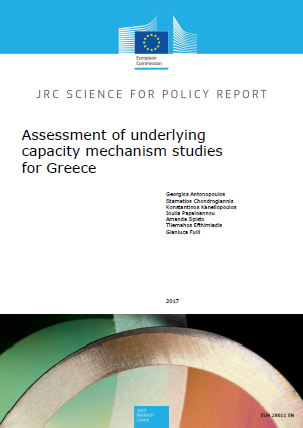
2017 - Assessment of underlying capacity mechanism studies for Greece
This report presents recommendations for the Greek power system adequacy assessment. Approaches to generation adequacy assessment vary between countries, not only with regard to the implemented methodology, but also with regard to the generation and demand models used to estimate these elements. Furthermore, the results are very sensitive to the assumptions used to project future resources and demand(s). In this context, there is a need for harmonisation of models, data assumptions, and inputs between national and European adequacy and flexibility studies. Best European and international practices based on the current and future evolution of the power system, should be adopted and implemented to provide a common assessment methodology for the pan-European and national adequacy studies.
Following the assessment of the studies, the main recommendations for potential improvements are summarised below. It should be mentioned that to achieve full alignment with the ENTSO-E standards on generation adequacy studies or the state-ofthe-art on flexibility assessment, the implementation of (at least) these methodological suggestions is needed.
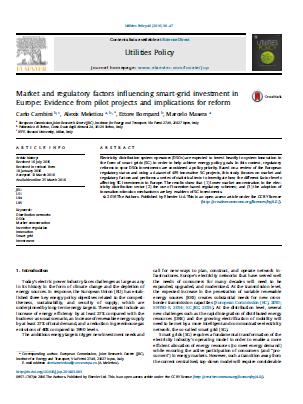
2016 - Market and regulatory factors influencing smart-grid investment in Europe
This paper focuses on market and regulatory factors, based on a review of the European regulatory status and using a dataset of 459 innovative smart grid projects. It performs a series of statistical tests to investigate how the different factor levels affecting smart grid investments in Europe.
Electricity distribution system operators (DSOs) are expected to invest heavily in system innovation in the form of smart grids (SG) in order to help achieve energy policy goals. In this context, regulatory reforms to spur DSOs investments are considered a policy priority.
The results show that lower market concentration in the electricity distribution sector the use of incentive-based regulatory schemes; and the adoption of innovation-stimulus mechanisms are key enablers of smart grid investments.
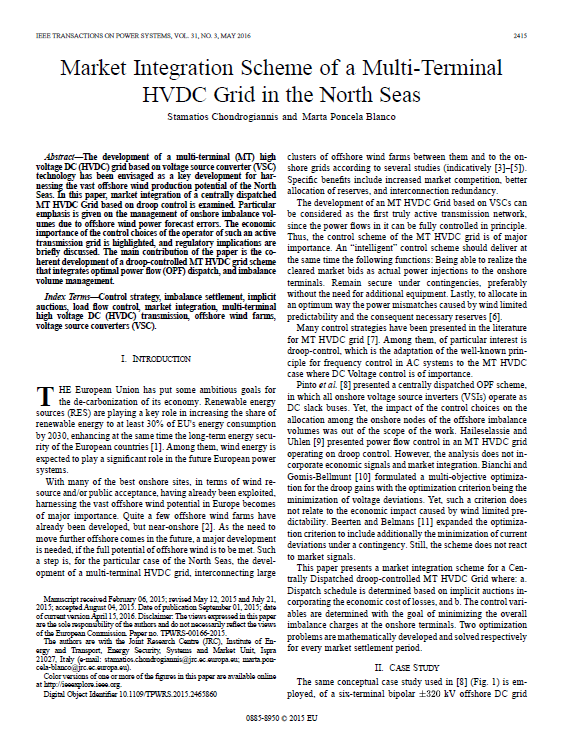
2016 - Market Integration Scheme of a Multi-Terminal HVDC Grid in the North Seas
The development of a multi-terminal (MT) high voltage DC (HVDC) grid based on voltage source converter (VSC) technology has been envisaged as a key development for harnessing the vast offshore wind production potential of the North Seas. In this paper, market integration of a centrally dispatched MT HVDC Grid based on droop control is examined. Particular emphasis is given on the management of onshore imbalance volumes due to offshore wind power forecast errors. The economic importance of the control choices of the operator of such an active transmission grid is highlighted, and regulatory implications are briefly discussed. The main contribution of the paper is the coherent development of a droop-controlled MT HVDC grid scheme that integrates optimal power flow (OPF) dispatch, and imbalance volume management.
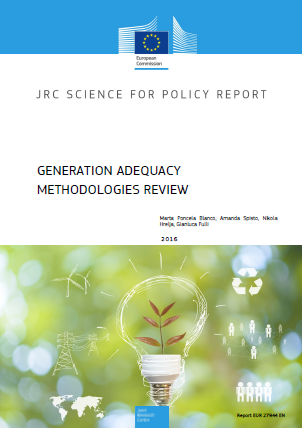
2016 - Generation Adequacy Methodologies Review
This report presents a review of some European Member States, regions and ENTSO-E’s pan-European methodologies to highlight the latest developments and current trends.
Generation adequacy is a key tool to assess security of supply in an electrical system. Complementing national adequacy assessments with regional and pan-European studies is required for scrutinising the integrated interplay and functioning of the European electricity system and market. What is needed, besides a minimum harmonisation of models and data inputs, is to clearly determine what the scope of each assessment is. Indeed, increasing the model geographical size can be hardly attained at the same time as increasing the time resolution, as well as representing into detail several other system features; additionally, keeping things as simple as possible will avoid constant revisions of the fundamentals and the basic assumptions of the assessment methodologies used by a vast number of stakeholders.
In Europe, the integration of high amount of variable generation, demand response, storage, distributed generation, the increase of interconnection capacities and the electricity markets coupling, motivate a need for a revision of how adequacy is assessed.
